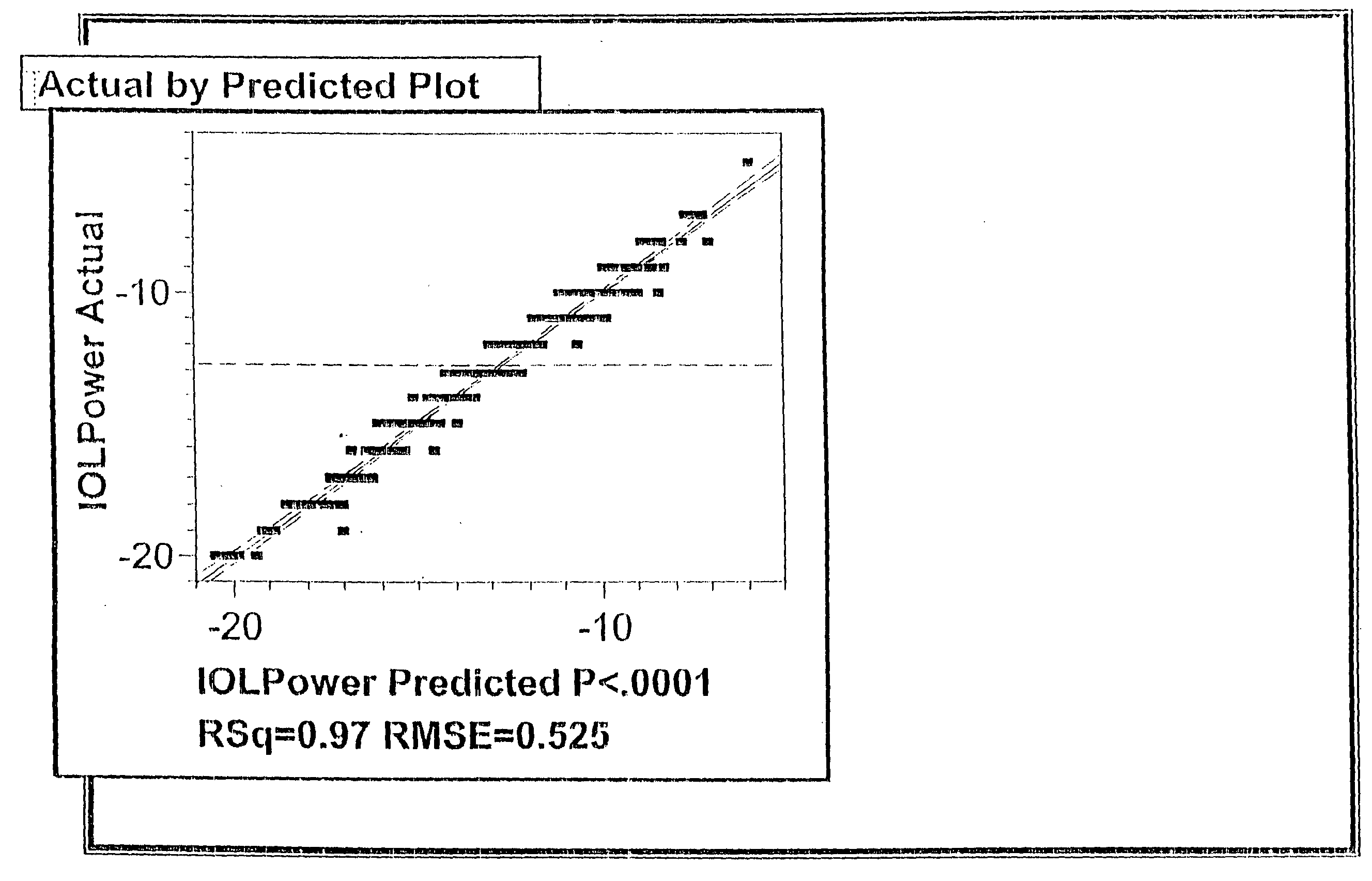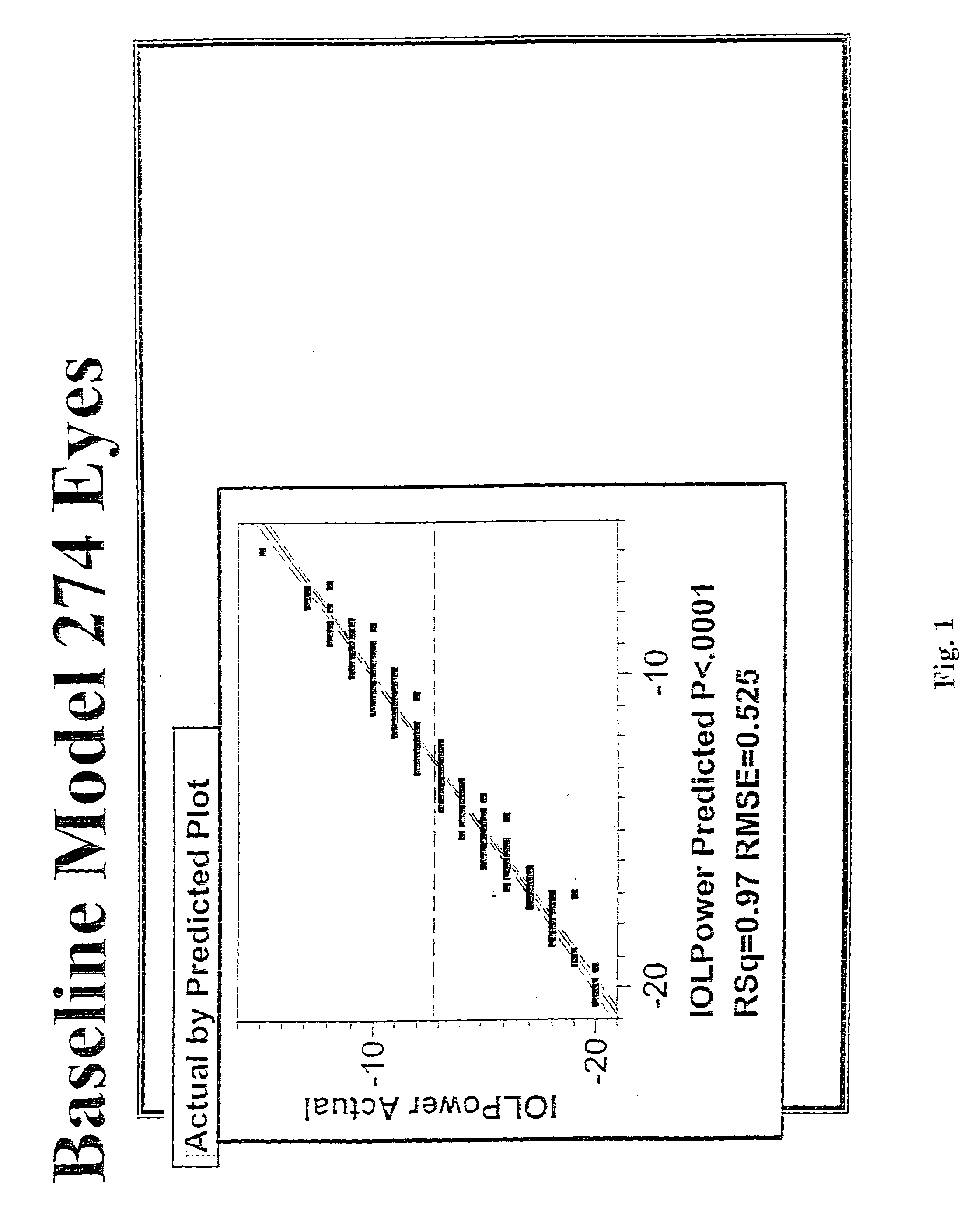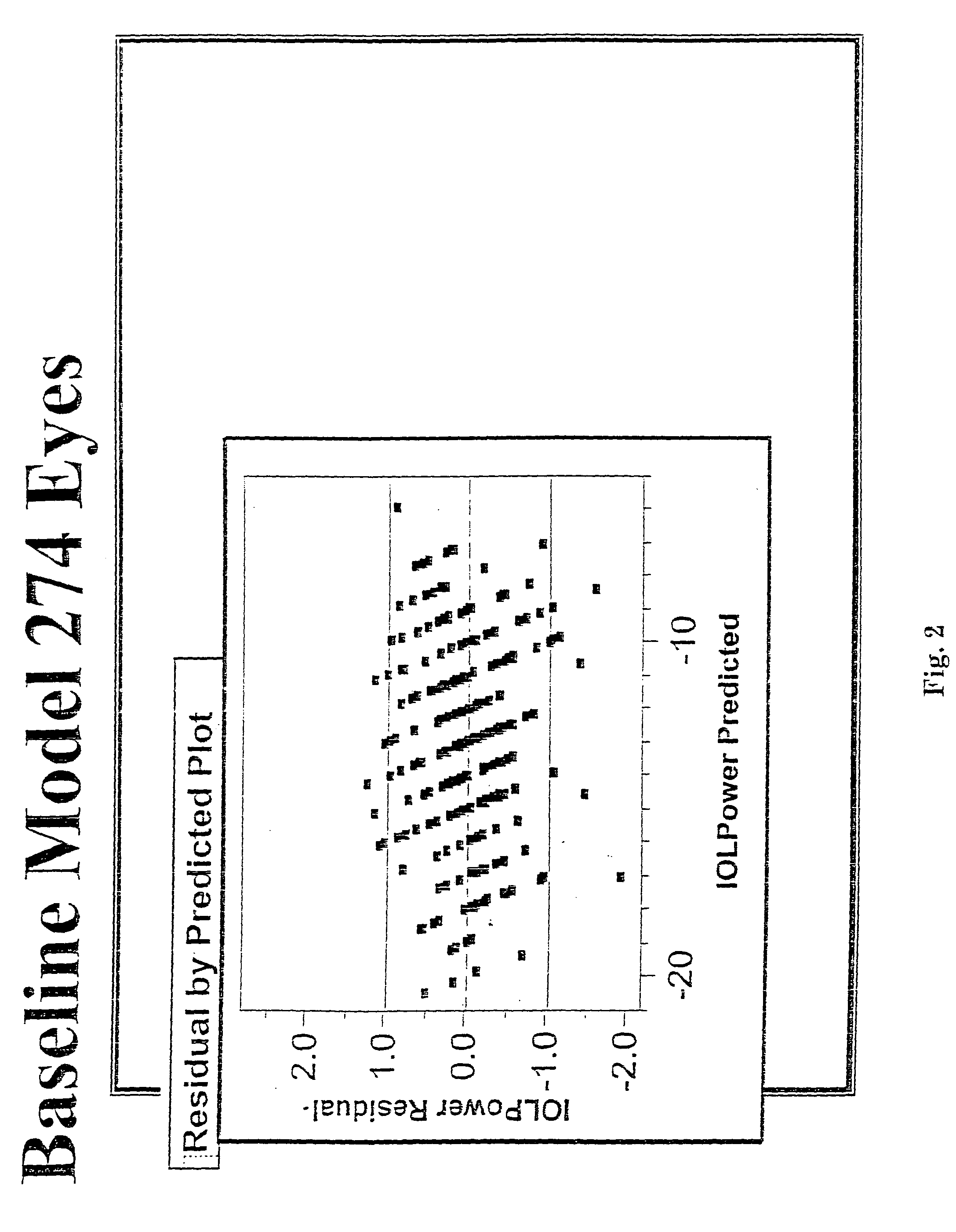Method for determining the power of an intraocular lens used for the treatment of myopia
a technology of intraocular lenses and power, applied in the field of intraocular lenses used for the treatment of myopia, can solve the problems of blurred retinal image of a distant object, no other suitable surgical alternative, and likely more risk, so as to improve the predictability of post-operative refraction and accurately predict the
- Summary
- Abstract
- Description
- Claims
- Application Information
AI Technical Summary
Benefits of technology
Problems solved by technology
Method used
Image
Examples
Embodiment Construction
[0040]Regression analysis is used by statisticians to study how the distribution of an output variable. In this this case, refraction varies in different groups of individuals. The groups of individuals are usually defined by one or more input variables. The output variable, of which there is only one in a particular regression analysis, is also called the criterion or predictand or outcome or dependent variable or regressand. The input variables are called predictors or independent variables or regressors or design variables.
[0041]In simple regression analysis, one input and one output variable are used, while in multiple regression there is one output variable, but more than one input variable. The important aspect is, however, the variation of the output as a function of the input. It is not that the output variable happens to be one-dimensional.
[0042]Because multiple regression analysis is an established statistical technique well known in the scientific community, the details o...
PUM
 Login to View More
Login to View More Abstract
Description
Claims
Application Information
 Login to View More
Login to View More - R&D
- Intellectual Property
- Life Sciences
- Materials
- Tech Scout
- Unparalleled Data Quality
- Higher Quality Content
- 60% Fewer Hallucinations
Browse by: Latest US Patents, China's latest patents, Technical Efficacy Thesaurus, Application Domain, Technology Topic, Popular Technical Reports.
© 2025 PatSnap. All rights reserved.Legal|Privacy policy|Modern Slavery Act Transparency Statement|Sitemap|About US| Contact US: help@patsnap.com



